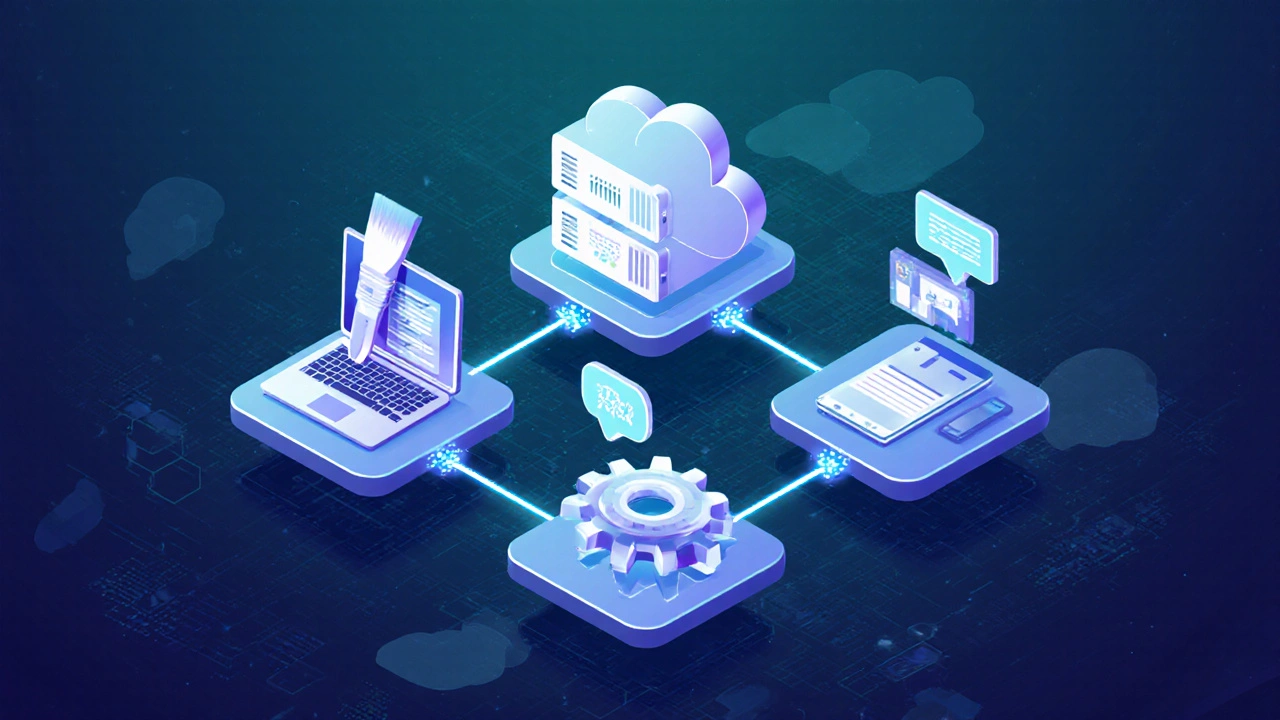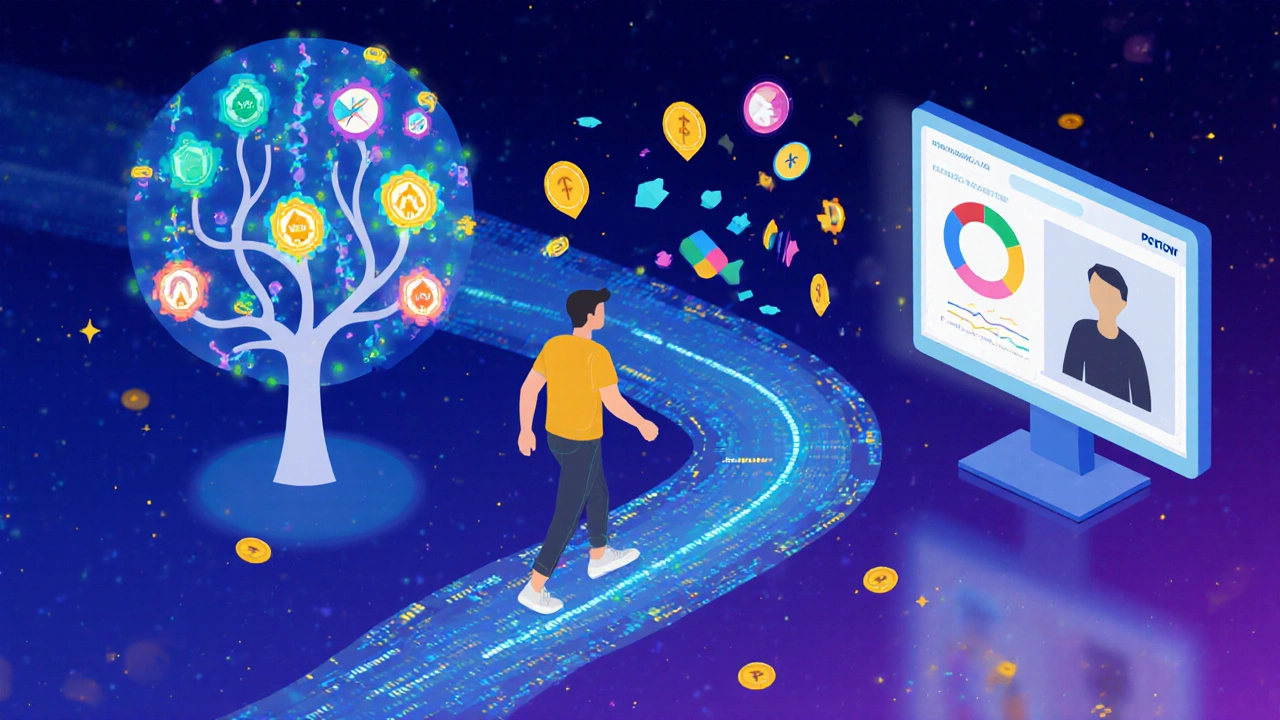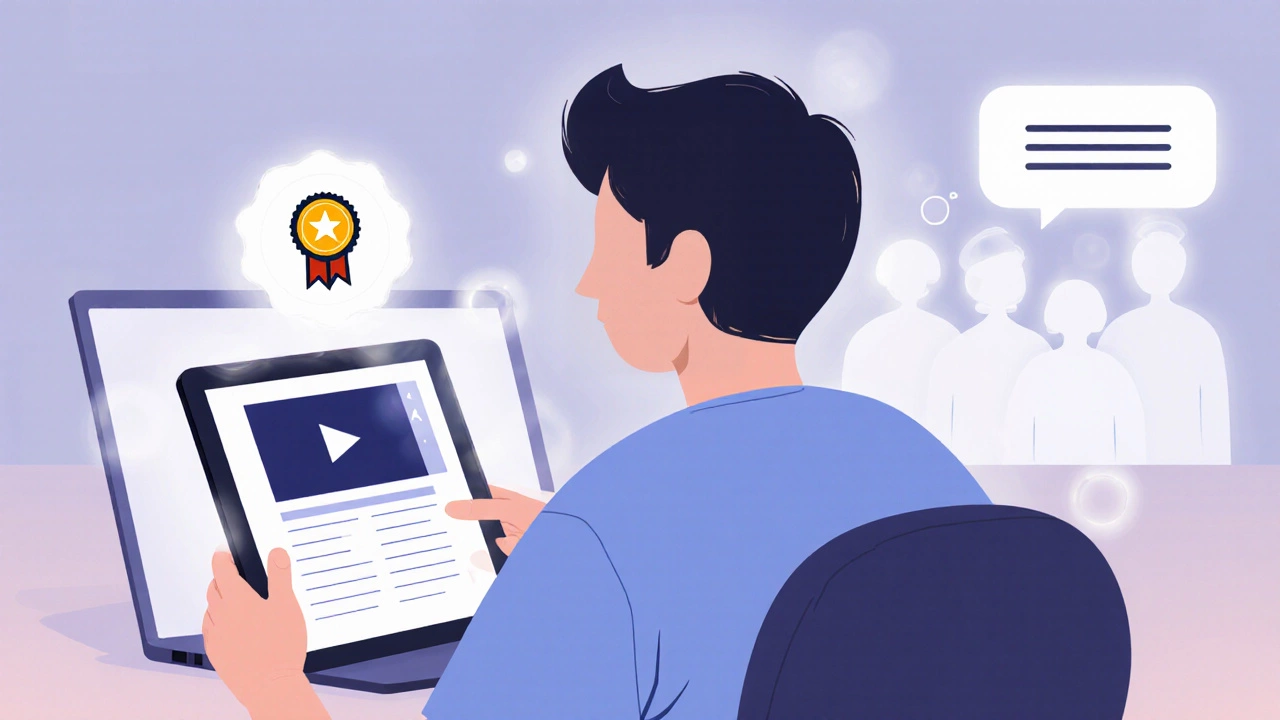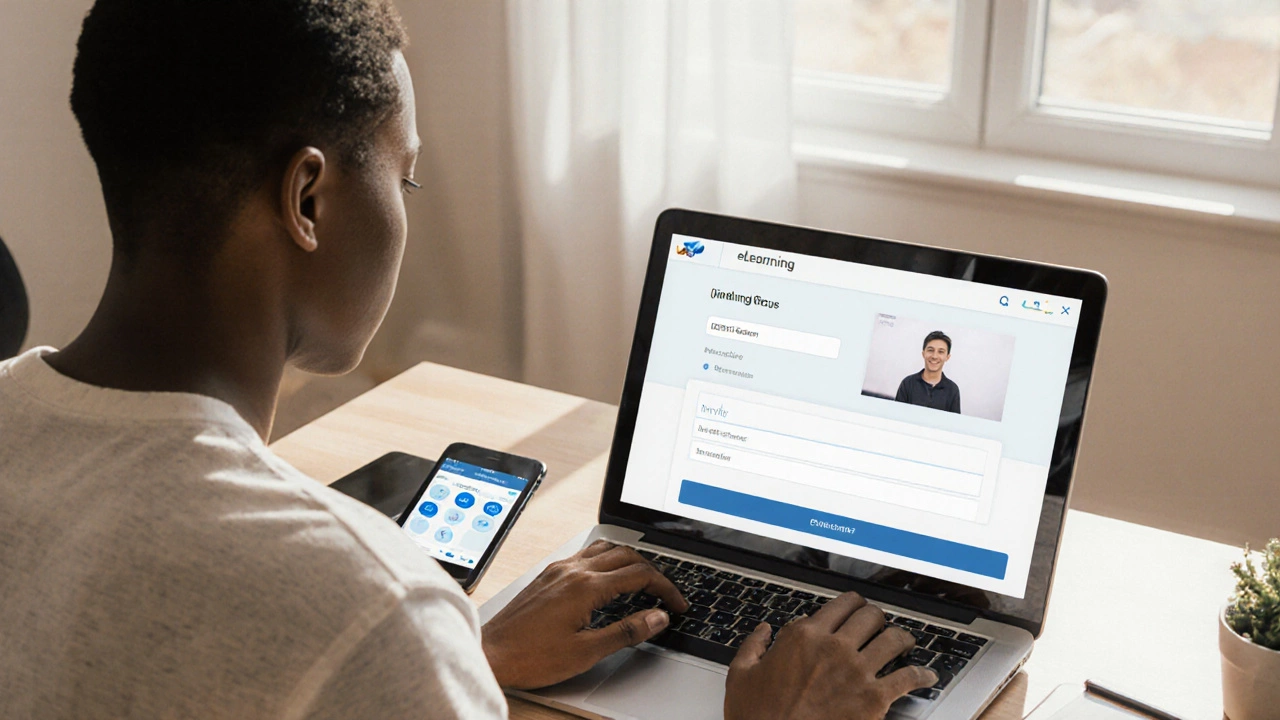eLearning Course Design Calculator
Design Your Effective eLearning Course
This calculator helps you determine optimal course design elements based on learning objectives, audience, and content type. Follow the steps to create engaging, effective eLearning experiences.
When you log into a course portal and start watching a video or answering a quiz, you’re experiencing eLearning the delivery of educational content through digital devices over the internet. It feels simple-click, watch, submit-but a lot goes on behind the scenes to make that experience smooth, interactive, and effective. This guide walks you through the nuts and bolts of how eLearning actually works, from the tech that powers it to the design tricks that keep learners engaged.
What exactly is eLearning?
At its core, eLearning is any learning activity that uses electronic resources-videos, PDFs, quizzes, simulations-to teach a skill or concept. Unlike traditional classroom settings, it isn’t tied to a physical location, which means learners can study anytime, anywhere. The flexibility is the main selling point, but it also introduces challenges like keeping students motivated and tracking progress.
Core components of an eLearning platform
Most platforms revolve around a few key building blocks:
- Learning Management System (LMS) software that stores, delivers, and tracks learning content - the backbone where courses, users, and data live.
- Content authoring tools applications like Articulate Rise or Adobe Captivate that let instructors create interactive lessons - the workshop where videos, quizzes, and simulations are built.
- Assessment engine module that generates quizzes, assignments, and auto‑grades results - the checkpoint that tells learners how well they’re doing.
- Communication suite forums, chat, or video‑conference tools that replicate classroom interaction - the social layer that keeps learners connected.

How content is delivered
Once a course is built, the LMS pushes it to learners using a few standard methods:
- Streaming video - Most platforms use HTTP Live Streaming (HLS) or MPEG‑DASH to deliver video chunks, so playback works on slow connections.
- Downloadable assets - PDFs, audio files, and slide decks are stored on cloud storage (Amazon S3, Azure Blob) and delivered via CDN for fast access.
- Interactive widgets - SCORM‑ or xAPI‑compliant modules run inside the browser, sending back data about clicks, scores, and time spent.
All of this happens in real time, but the heavy lifting-transcoding videos, scaling servers, storing results-is done in the background by cloud services.
Types of eLearning experiences
Not every online course looks the same. Depending on the learning goal, you’ll see three main delivery styles:
| Style | Key Features | Best For |
|---|---|---|
| Synchronous | Live video, real‑time chat, instructor presence | Workshops, language practice, labs |
| Asynchronous | Pre‑recorded videos, self‑paced quizzes, forums | Certification courses, MOOCs, corporate onboarding |
| Hybrid (Blended) | Mix of live sessions + on‑demand modules, periodic assessments | University semester courses, professional development paths |
Choosing the right style depends on scheduling constraints, the need for immediate feedback, and the complexity of the subject matter.

Key technologies behind eLearning
Several standards and tools make the system interoperable and future‑proof:
- SCORM Sharable Content Object Reference Model, a set of specifications for packaging and tracking eLearning objects - ensures a quiz built in one tool works in any SCORM‑compatible LMS.
- xAPI (Tin Can) captures learning experiences outside the LMS, like mobile app usage or VR simulations - gives a fuller picture of learner behavior.
- Adaptive learning engines algorithms that modify the next lesson based on previous performance - personalize pathways for each student.
- Gamification points, badges, leaderboards that turn learning into a game‑like journey - boosts motivation and retention.
- Learning analytics dashboards that visualize completion rates, drop‑off points, and skill gaps - inform instructors where to intervene.
When all these pieces talk to each other via APIs, you get a seamless experience that feels like a single product rather than a collection of gadgets.
Designing effective eLearning courses
Good design is more than pretty slides. Here’s a quick recipe that works for most audiences:
- Define clear objectives - What should a learner be able to do after finishing? Write them as measurable verbs (e.g., "Create a pivot table in Excel").
- Chunk content - Break lessons into 5‑10 minute segments. Shorter chunks keep attention high and make it easier to fit learning into a busy day.
- Use multimedia wisely - Pair a 2‑minute explainer video with an interactive drag‑and‑drop activity. Avoid long blocks of text.
- Add formative assessments - Quick quizzes after each chunk give instant feedback and let the LMS record progress.
- Leverage adaptive paths - If a learner scores below 70%, route them to a remedial video; otherwise, let them advance.
- Incorporate social elements - Discussion prompts or peer‑review assignments turn solitary study into a community experience.
Follow these steps and you’ll reduce dropout rates, boost knowledge retention, and give administrators data they can act on.

Common pitfalls and how to avoid them
Even seasoned instructional designers stumble over a few traps:
- Overloading learners - Packing too many features into one screen leads to cognitive overload. Keep UI clean and focus on one action at a time.
- Ignoring mobile users - More than half of global eLearning traffic comes from phones. Test all modules on iOS and Android before launch.
- Skipping accessibility - Use captions, alt‑text, and keyboard navigation to meet WCAG 2.1 AA standards. It’s not just legal compliance; it widens your audience.
- Neglecting data privacy - Store personal data in GDPR‑compliant regions, encrypt at rest, and provide clear consent dialogs.
- Forgetting to update content - Schedule quarterly reviews. Outdated statistics or broken links erode credibility fast.
Quick checklist for launching your first eLearning course
- Set measurable learning objectives. \n
- Choose an LMS that supports SCORM and xAPI.
- Produce bite‑sized video (<10 min) and accompanying quizzes.
- Enable mobile‑responsive design and test on two devices.
- Add captions, alt‑text, and ensure keyboard navigation.
- Configure analytics dashboards to monitor completion and drop‑off.
- Run a pilot with 5‑10 users and collect feedback.
- Publish, announce, and schedule a live Q&A session.
What is the difference between synchronous and asynchronous eLearning?
Synchronous eLearning happens in real time-think live webinars or virtual classrooms-while asynchronous learning lets students engage with pre‑recorded content at their own pace. Synchronous offers immediate interaction; asynchronous provides flexibility.
Do I need a custom LMS to start an online course?
No. Many cloud‑based LMSs (e.g., Canvas, Moodle Cloud, TalentLMS) offer free tiers and easy setup. Choose one that supports SCORM or xAPI if you plan to track detailed learner data.
How can I make my eLearning content mobile‑friendly?
Design with responsive layouts, keep videos under 5 MB, use HTML5 video players, and test on both Android and iOS. Tools like Adobe Captivate automatically generate mobile‑ready outputs.
What role does gamification play in eLearning?
Gamification adds points, badges, and leaderboards to motivate learners, increase completion rates, and provide instant feedback. It works best when the rewards are tied to real learning outcomes.
Is learning analytics useful for small businesses?
Absolutely. Even a simple dashboard that shows course completion percentages can highlight content that needs improvement and help justify training spend.

